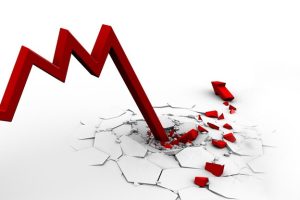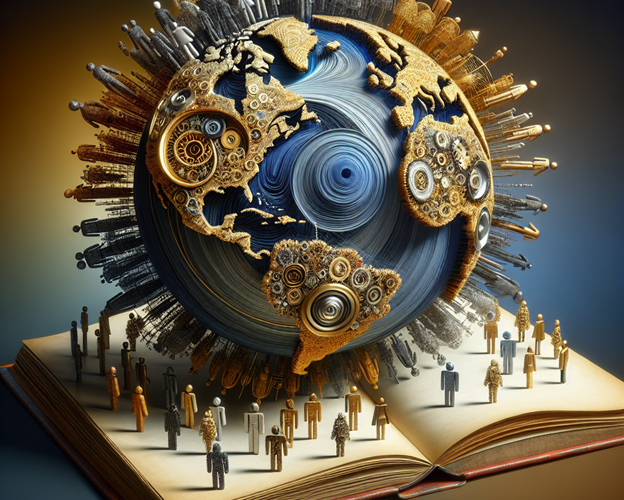Understanding the intricacies of the global economy requires a deep dive into various factors that influence its ebb and flow. As someone deeply fascinated by economics, I’ve spent considerable time analyzing the drivers behind major global economic fluctuations and the impact of policy changes on global economic stability. These explorations have led me to appreciate the complex interplay of factors that shape our world’s financial landscape.
Understanding the Basics of Global Economy
Exploring the drivers behind major global economic fluctuations reveals a tapestry of interconnected elements. Economic policies, geopolitical tensions, technological advancements, and natural disasters all play significant roles. For instance, a change in oil prices can trigger inflationary pressures globally, affecting countries far from the oil source. Similarly, policy changes in one nation, such as interest rate adjustments by central banks, can have far-reaching effects, influencing global investment flows and economic stability.
Analyzing the impact of policy changes on global economic stability further underscores the interconnectedness of national economies. Policy shifts in trade, for example, can lead to significant disruptions in global supply chains, affecting economies worldwide. The introduction of tariffs can lead to trade wars, which, while intended to protect domestic industries, can ultimately hamper global economic growth.
The Impact of Globalization on Economies

Global economic integration has reshaped national economies and labor markets, making them more interconnected than ever. This integration has facilitated the movement of goods, services, capital, and labor across borders, leading to increased economic efficiency but also exposing economies to global shocks. Labor markets, in particular, have been transformed, with jobs moving to regions where labor costs are lower, affecting wage dynamics and employment patterns in both developed and emerging economies.
Global economic policies influence the direction of worldwide financial stability. Policies promoting free trade and open markets have generally supported economic growth, but they have also led to debates about income inequality and the loss of manufacturing jobs in developed economies. The challenge lies in crafting policies that harness the benefits of globalization while mitigating its adverse effects.
Major Economic Theories and Global Application
Global economic theories shape international trade and investment patterns, providing a framework for understanding how economies interact. Theories such as comparative advantage suggest that countries benefit from specializing in the production of goods and services they can produce most efficiently, trading them for goods produced more efficiently by other countries. This principle underpins the rationale for free trade agreements, which aim to reduce trade barriers and increase economic integration.
Understanding global economic turns aids in predicting market fluctuations. Economic theories, including those related to business cycles and monetary policy, help analysts forecast economic trends, guiding investment and policy decisions. By applying these theories in a global context, economists can better anticipate the effects of policy changes, technological advancements, and other factors on the global economy.
Currency Exchange and Its Effects on Global Trade
Currency exchange shapes global economic dynamics, influencing trade flows and investment decisions. Exchange rates determine the cost of importing and exporting goods, affecting trade balances and economic growth. A strong currency makes imports cheaper and exports more expensive, potentially leading to trade deficits, while a weak currency can boost exports by making them more competitively priced on the global market.
Fluctuating exchange rates can destabilize global economic stability and trade. Volatile exchange rates introduce uncertainty, complicating business planning and investment. Companies engaging in international trade often use hedging strategies to mitigate exchange rate risk, but sudden shifts can still have significant economic impacts, affecting competitiveness and profitability.
The Role of International Organizations in Economy

International organizations shape global economic policies and standards, playing a critical role in fostering cooperation and addressing global economic challenges. Organizations such as the International Monetary Fund (IMF) and the World Bank provide financial assistance and policy advice to countries, helping to stabilize economies and promote sustainable growth. The World Trade Organization (WTO) sets rules for international trade, aiming to ensure that trade flows smoothly, predictably, and freely.
They play a pivotal role in managing global economic crises. During financial crises, international organizations can provide emergency funding, facilitate debt restructuring, and offer technical assistance to affected countries. By coordinating policy responses, these organizations help mitigate the impact of crises, supporting economic recovery and stability.
Technological Advances and Global Economic Growth
Technological advances drive global economic growth and innovation, transforming industries and creating new markets. Innovations in information technology, for example, have revolutionized communication and commerce, enabling businesses to operate more efficiently and access global markets. Advances in manufacturing technologies, such as automation and 3D printing, are changing production processes, potentially reshaping global supply chains.
Understanding global economic turns through the lens of tech advancements offers insights into future trends. As technologies evolve, they can disrupt existing industries and spur economic growth, but they can also create challenges, such as job displacement and increased inequality. Anticipating these shifts is crucial for policymakers and businesses aiming to capitalize on technological opportunities while addressing potential drawbacks.
Environmental Concerns and Economic Sustainability
Global economic sustainability hinges on environmental conservation and management. Economic growth has often come at the expense of environmental degradation, leading to challenges such as climate change, resource depletion, and loss of biodiversity. Addressing these issues is essential for ensuring long-term economic sustainability, requiring policies that balance economic development with environmental protection.
Economic policies must address global environmental concerns for sustainability. This includes investing in renewable energy, promoting energy efficiency, and implementing sustainable agriculture practices. By integrating environmental considerations into economic decision-making, countries can pursue a path of sustainable development, benefiting both the economy and the environment.
Global Economic Crises: Causes and Solutions

Global economic crises often stem from unregulated financial markets, leading to speculative bubbles and unsustainable debt levels. The 2008 financial crisis, for example, was triggered by excessive risk-taking in the financial sector, leading to a global economic downturn. These crises highlight the need for effective regulation and oversight of financial markets to prevent excessive speculation and ensure financial stability.
Solutions include global cooperation and stronger financial oversight mechanisms. Strengthening international financial regulations, improving transparency, and enhancing the resilience of financial institutions are crucial steps in preventing future crises. Collaboration among countries is essential for addressing the global nature of financial markets, ensuring coordinated responses to emerging risks.
Looking Ahead: Predictions for the Global Economy
Global economic shifts signal emerging markets’ rising influence. As countries such as China and India continue to grow, their impact on the global economy will become increasingly significant, reshaping trade patterns and financial flows. This shift presents both opportunities and challenges, requiring adjustments in global economic policies and strategies.
Predictive analytics enhance understanding of global economic trends, offering valuable tools for forecasting economic developments. By analyzing vast amounts of data, economists can identify patterns and predict future movements in markets, helping businesses and policymakers make informed decisions. As technology advances, the use of predictive analytics in understanding global economic turns is likely to become even more prevalent, shaping the future of economic analysis.
Conclusion
In conclusion, understanding global economic turns requires a multifaceted approach, considering the diverse factors that influence economic stability and growth. From policy changes and globalization to technological advancements and environmental concerns, the global economy is shaped by a complex array of forces. By analyzing these factors and their interconnections, we can gain insights into the dynamics of the global economy, helping to navigate its challenges and capitalize on its opportunities.










